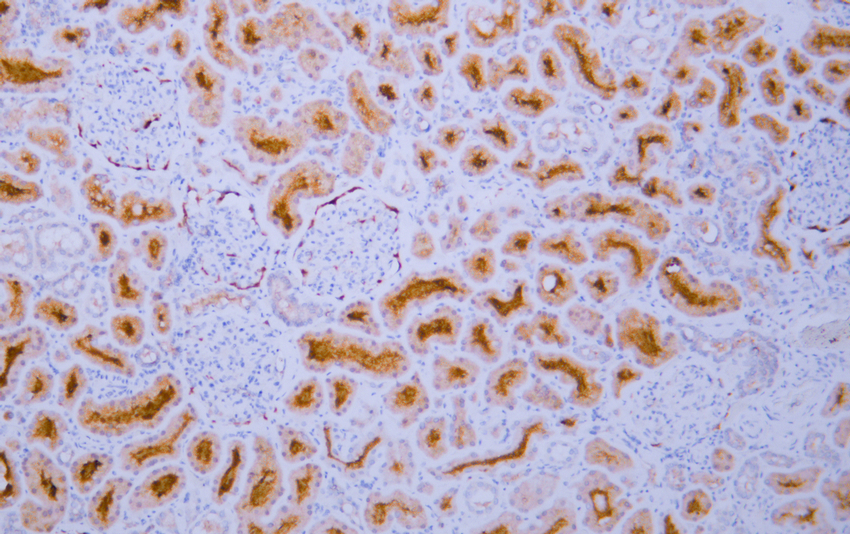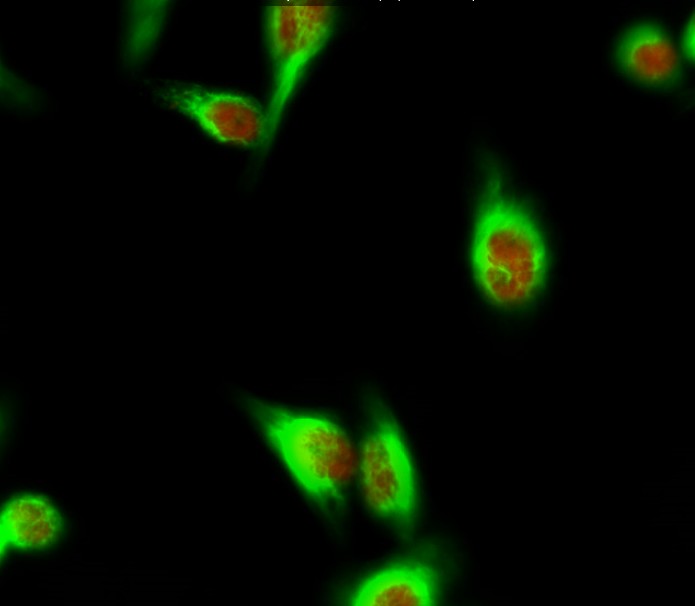Total Histone deacetylase 6 Cell-Based Colorimetric ELISA Kit
- Catalog No.:KA3290C
- Applications:ELISA
- Reactivity:Human;Mouse
- Gene Name:
- HDAC6
- Human Gene Id:
- 10013
- Human Swiss Prot No:
- Q9UBN7
- Mouse Swiss Prot No:
- Q9Z2V5
- Storage Stability:
- 2-8°C/6 months
- Other Name:
- Histone deacetylase 6 (HD6) (EC 3.5.1.98)
- Detection Method:
- Colorimetric
- Background:
- catalytic activity:Hydrolysis of an N(6)-acetyl-lysine residue of a histone to yield a deacetylated histone.,function:Responsible for the deacetylation of lysine residues on the N-terminal part of the core histones (H2A, H2B, H3 and H4). Histone deacetylation gives a tag for epigenetic repression and plays an important role in transcriptional regulation, cell cycle progression and developmental events. Histone deacetylases act via the formation of large multiprotein complexes (By similarity). Plays a central role in microtubule-dependent cell motility via deacetylation of tubulin.,PTM:Sumoylated in vitro.,PTM:Ubiquitinated. Its polyubiquitination however does not lead to its degradation.,similarity:Belongs to the histone deacetylase family. Type 2 subfamily.,similarity:Contains 1 UBP-type zinc finger.,subcellular location:It is mainly cytoplasmic, where it is associated with microtubules.,subunit:Interacts with CBFA2T3, HDAC11 and SIRT2. Interacts with F-actin. Interacts with BBIP10.,
- Function:
- protein polyubiquitination, response to reactive oxygen species, chromatin organization, transcription, regulation of transcription, DNA-dependent, protein amino acid deacetylation, proteolysis, misfolded or incompletely synthesized protein catabolic process, intracellular protein transport, autophagy, response to oxidative stress, negative regulation of microtubule depolymerization, protein localization, macromolecule catabolic process, cellular response to starvation,response to toxin, response to endogenous stimulus, positive regulation of biosynthetic process, positive regulation of signal transduction, response to extracellular stimulus, response to organic substance, response to inorganic substance, regulation of hydrogen peroxide metabolic process, regulation of receptor activity, positive regulation of macromolecule biosynthetic process, positive regulation of macromolecule metab
- Subcellular Location:
- Cytoplasm . Cytoplasm, cytoskeleton . Nucleus . Perikaryon . Cell projection, dendrite . Cell projection, axon . It is mainly cytoplasmic, where it is associated with microtubules. .
- June 19-2018
- WESTERN IMMUNOBLOTTING PROTOCOL
- June 19-2018
- IMMUNOHISTOCHEMISTRY-PARAFFIN PROTOCOL
- June 19-2018
- IMMUNOFLUORESCENCE PROTOCOL
- September 08-2020
- FLOW-CYTOMEYRT-PROTOCOL
- May 20-2022
- Cell-Based ELISA│解您多样本WB检测之困扰
- July 13-2018
- CELL-BASED-ELISA-PROTOCOL-FOR-ACETYL-PROTEIN
- July 13-2018
- CELL-BASED-ELISA-PROTOCOL-FOR-PHOSPHO-PROTEIN
- July 13-2018
- Antibody-FAQs

.jpg)

